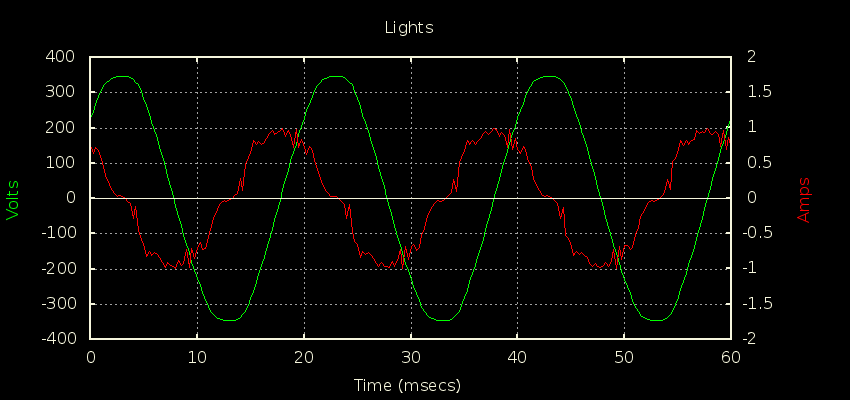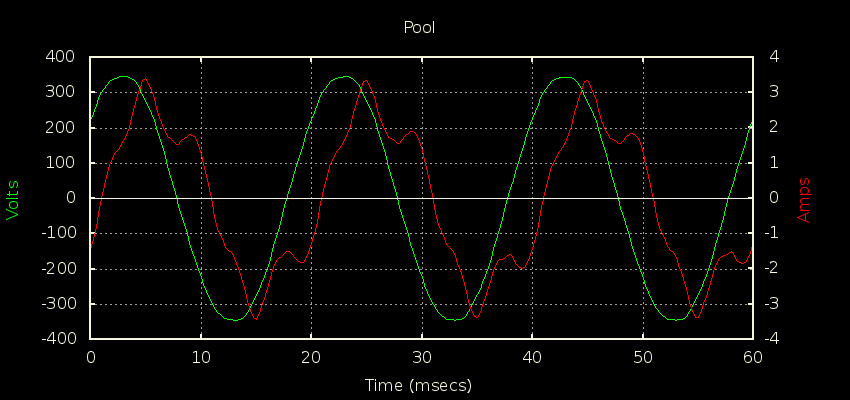I’ve never taken much comfort from the “V is always big” theory. If we were measuring DC or RMS values I’d see the merit, but we’re taking hundreds of V*I samples per cycle, so the dynamic range required for V really is Vpeak all the way down to 0.
How important are accurate V measurements down near 0? It all depends on the load you’re trying to measure. In the vast majority of cases when V is low, V*I is even lower so inaccuracies in V will go unnoticed in Power measurements. But I don’t have to look too hard to find cases around my house where that’s not the case.
The induction hob on standby.
To measure that accurately you need to make sure you’ve not introduced any phase errors, and you need to ensure your V measurement is accurate down low.
Unloaded pool pump
Not as extreme an example, but still fairly significant currents flowing when V is near 0.
It reminds me a little of the continuous sampling debate. 99% of the time, discreet sampling will work just fine. The problem is that when presented with a power reading, you’ve no way of knowing if it’s a 99%'er or a 1%'er. That’s particularly the case when you’ve discovered an anomaly. Do you pursue it, or do you just shrug and say it’s probably just one of those loads where my meter doesn’t perform so well.

